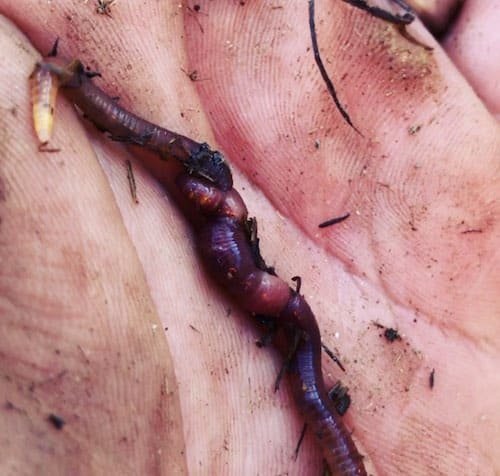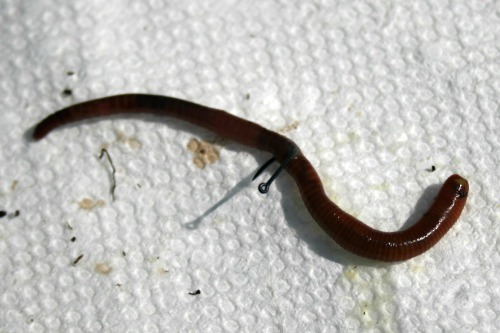Maximize Lawn Growth with Top-Rated Products from Red Wiggler Express
Red Wigglers: The Unsung Heroes of Organic Waste Recycling
Red wigglers, or Eisenia fetida, serve as crucial agents in the natural waste reusing process, changing thrown out materials into beneficial vermicompost. As the globe progressively looks for remedies to deal with waste build-up and improve farming productivity, recognizing the duty of these worms becomes vital.
What Are Red Wigglers?
The impressive resilience of red wigglers, scientifically known as Eisenia fetida, highlights their critical function in natural waste recycling. These small, reddish-brown earthworms are commonly located in decomposing organic issue, such as compost heap and manure lots. Lake Hickory Bait. Unlike other earthworm types, red wigglers thrive in nutrient-rich settings and are extremely effective at damaging down organic products, making them necessary for vermicomposting

(Red Wiggler Express)In enhancement to their function in waste decrease, red wigglers add to soil health by boosting dirt structure and oygenation through their burrowing activities (Lake Hickory Bait). Their presence in composting systems not only improves disintegration prices yet likewise advertises a lasting approach to throw away administration, illustrating their relevance in environmental preservation efforts
Advantages of Composting With Worms
Composting with worms, specifically red wigglers, supplies various advantages that enhance both waste monitoring and soil health. These worms effectively break down organic waste, converting it into nutrient-rich vermicompost that enhances dirt. This procedure increases disintegration, enabling a faster recycling of kitchen scraps and other organic materials compared to conventional composting methods.
In addition, the vermicompost generated by red wigglers is teeming with beneficial bacteria, which help boost dirt framework, oygenation, and dampness retention. This boosts the total wellness of plants, promoting energetic development and increased yields in yards and agricultural setups. The usage of worms in composting lessens the production of greenhouse gases, such as methane, contributing to a much more lasting waste administration system.

How to Start Vermicomposting
Developing a vermicomposting system is a straightforward procedure that can generate significant benefits for both waste administration and dirt enrichment. To begin, pick an appropriate container, such as a plastic container or wooden box, with sufficient air flow openings to ensure proper air movement. The dimensions need to ideally be about 2 feet by 3 feet, permitting enough area for the worms to thrive.
Following, prepare bed linen material, which can include shredded newspaper, cardboard, or coconut coir. This bed linen needs to be moistened to develop an ideal environment for the worms. As soon as the bed linen is in location, present red wigglers (Eisenia fetida) right into the container, usually around one extra pound of worms for every square foot of area.
Following the positioning of worms, add organic waste, such as fruit and vegetable scraps, coffee premises, and crushed eggshells. With these actions, you will efficiently start a vermicomposting system that contributes to sustainable waste administration and improves your soil.
Maintaining a Healthy And Balanced Worm Container
(Lake Rhodhiss Bait)Maintaining a worm bin growing calls for regular focus and like make certain the health and wellness of the red wigglers and the performance of the composting procedure. Proper upkeep starts with keeping an eye on the dampness levels; the container ought to perspire but not soaked. A good regulation of thumb is to preserve a consistency similar to a wrung-out sponge.
Carefully mixing the bed linen and food scraps every couple of weeks prevents compaction and guarantees that all worms have accessibility to oxygen. In addition, it is essential to feed the worms suitably.
If the container becomes too hot or chilly, the worms might end up being stressed out. By carefully taking care of these aspects, one can preserve a durable and effective worm container.
Effect On Sustainable Living
The effective upkeep of a worm bin not just benefits the health of red wigglers but additionally contributes considerably to lasting living methods. By reusing natural waste, such as cooking area scraps and yard particles, red wigglers assist divert substantial quantities of material from garbage dumps. This reduction in waste not just lowers greenhouse gas exhausts yet likewise reduces the ecological burden connected with waste administration.
In addition, the castings created by red wigglers act as a nutrient-rich natural plant food, enhancing soil wellness and promoting plant growth. This all-natural choice to chemical plant foods sustains lasting agriculture and gardening methods, reducing dependence on synthetic inputs that can harm ecological communities. Furthermore, worm composting cultivates recognition of waste management, motivating individuals and areas to take on more lasting behaviors.

Final Thought
In recap, red wigglers work as vital factors to organic waste reusing with their effective decomposition of organic materials. Their capability to produce nutrient-rich vermicompost enhances dirt health and wellness and sustains sustainable agricultural methods. By incorporating vermicomposting right into waste monitoring approaches, people and areas can considerably minimize waste while promoting environmental sustainability. The duty of Eisenia fetida in promoting healthy and balanced ecosystems underscores you could try here the importance of these organisms in accomplishing lasting living and improving soil fertility.